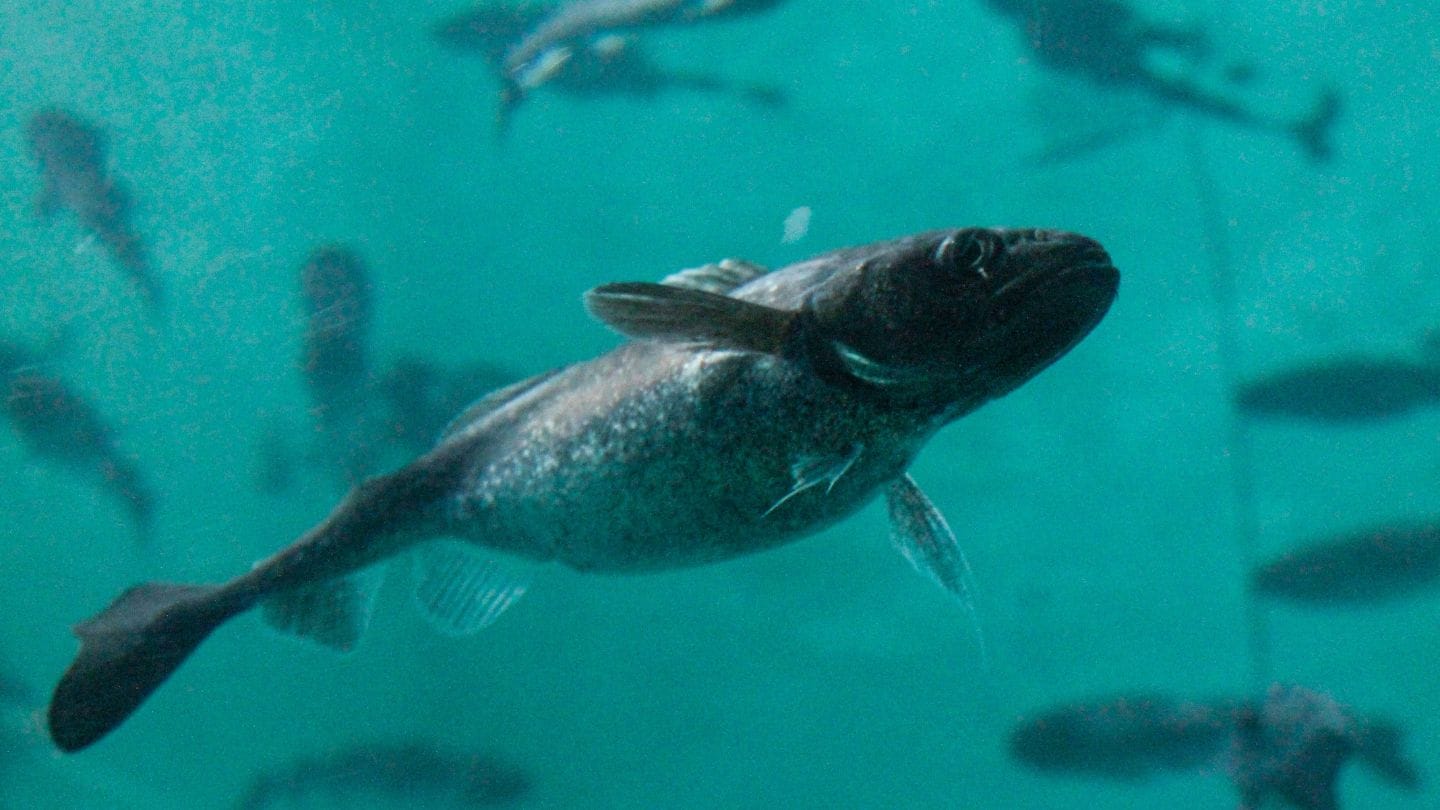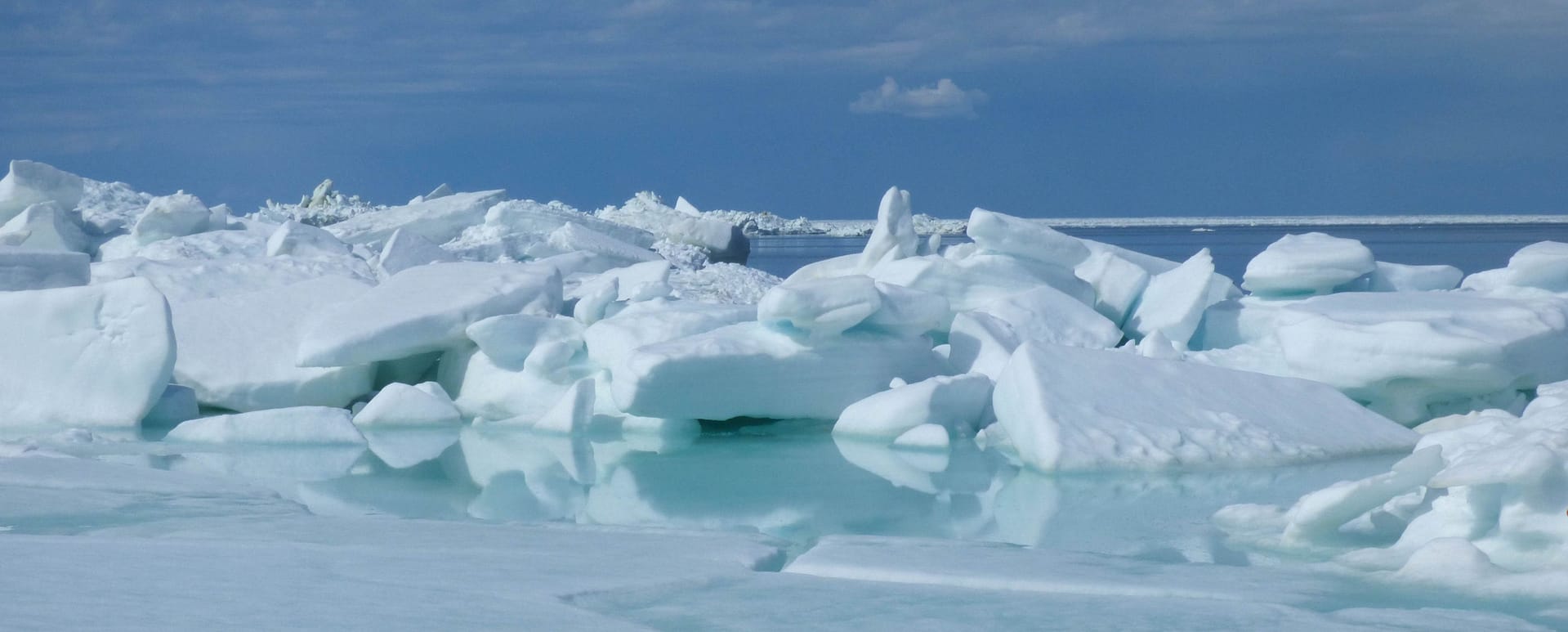When marine biologist Amalis Riera put a hydrophone in an Arctic cod tank at the University of British Columbia, she wasn’t expecting to hear much. Riera had already tried putting hydrophones in tanks at the Vancouver Aquarium, in search of an undiscovered fish noise, but so far had only heard the hum of pipes and water filters. This time, however, was different: she heard a quiet but very discernible grunt.
This grunt was the first time the Arctic cod had been identified as a sound-producing species, and the discovery marked the beginning of a multi-year research project led by UVic marine ecologist and Liber Ero Chair for Fisheries Research Francis Juanes.
It also led to the production of the Codcast, a four-episode podcast series that launches on April 15 on all podcast apps, including Spotify and Apple Podcast. The podcast tells the story of the discovery of the Arctic cod grunt and what the research team has learned so far about the sound.
Diving into fish sounds

Fish sounds is a newer area of research that is rapidly growing, with Juanes at the forefront. The more we listen, the more we hear, and while the ocean has long been considered a silent realm, researchers are discovering a growing number of fish species that can produce sounds, including grunts, rattles, snaps, hums, murmurs and even whistles. These sounds are an incredibly effective mode of communication for fish and can be used by researchers to better understand a species and assess their overall population health.
“Fish sounds are an under-recognized, but immensely important part of ocean life. We wanted to create this podcast to help open peoples’ eyes and ears to this underwater soundscape, and increase awareness of how important a simple little fish like Arctic cod can be.” says Juanes, principal investigator on the Arctic cod project.
The Codcast, produced by John Last in association with the Juanes Lab, interweaves interviews, narration and, of course, the sounds themselves to tell the story of fish sounds by focusing on the Arctic cod.
“Over the four episodes, we introduce listeners to the study of fish sounds and why it’s important, passive acoustics monitoring, and the impact of anthropogenic noise pollution in the ocean,” says Shaye Ogurek, an undergraduate biology student and Juanes Lab research associate who has played a key role in the project. “We also share the story of how the Arctic cod grunt was discovered, the process of conducting this research and what we’ve learned about the Arctic cod grunt so far.”
While Riera, a research associate in the Juanes lab at the time of the discovery, has now moved on, her story still sits at the centre of the podcast. Other researchers from the Juanes Lab are also featured, alongside collaborators from Oregon, Belgium, and New Zealand, as we’re introduced to the multi-pronged research project: recording and describing the sounds, identifying why and how the sounds are being used, answering questions around the seasonality of the sounds, especially as it relates to spawning, and determining the physiology of how the sound is produced.
Conserving Arctic cod

The Arctic cod is a critically important species. It’s the most abundant fish in the Arctic, representing 92 per cent of the fish in some areas and is a food source for almost everything, from other fishes to birds to marine mammals. Despite the very large and important role Arctic cod play in the Arctic ecosystem, we still lack a clear understanding of some of their basic ecology, such as their movement patterns and spawning locations. This lack of knowledge is alarming when considered in tandem with the rapid changes occurring in the Arctic as a result of climate change.
“As the Arctic is changing, we’re struggling to monitor or even get a good baseline understanding of current Arctic cod population health using traditional survey methods,” says Kelsie Murchy, a post-doctoral fellow in the Juanes Lab. “The ultimate goal with this research project is to gain a strong enough understanding of Arctic cod sounds to be able to employ passive acoustics to monitor and track the population.”
Passive acoustics, which involves putting hydrophones in the ocean and recording the soundscape over a long period of time, could allow researchers to estimate population size, monitor activities, determine spawning patterns and locations and assess overall health of the Arctic cod population without the need for a human presence. A better understanding of Arctic cod could help bolster conservation efforts, identifying critical habitats that need protection and informing regulations and policies to manage ocean noise.
“The general public doesn’t always get to see behind the curtain of science,” says Juanes. “Studying the grunt that a fish makes may seem insignificant to some, but our hope is that the Codcast helps people understand how that one small discovery opened up avenues of future research, allowing us to better monitor and track the Arctic cod population, and related species such as walleye pollock and Pacific cod, and ultimately contributing to better conservation measures.”
Who knew a grunt could have such an impact?
This podcast series was made with funding from the North Pacific Research Board.



